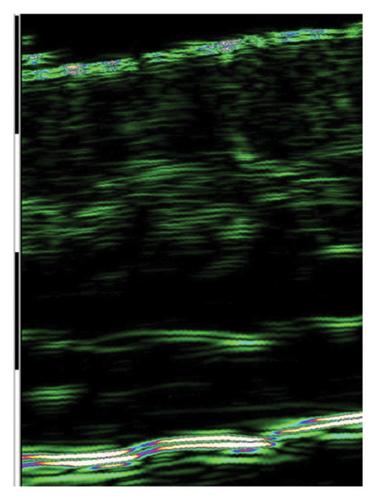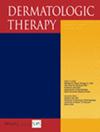为在美容治疗中优化利用富血小板血浆 (PRP) 和富血小板纤维蛋白 (PRF) 制定可重复的程序:利用超声波成像进行疗效评估--一项单中心前瞻性开放标签随机研究
摘要
研究目的这项单中心、前瞻性、开放标签随机研究旨在制定一种可重复的富血小板血浆(PRP)分离程序,最大限度地提高所收集材料中血小板的回收率和浓度参数、并评估自体富血小板血浆(浓缩富血小板血浆 C-PRP 和富血小板血浆低离心概念 PRP LCC)和富血小板纤维蛋白(注射用富血小板纤维蛋白 I-PRF 和流体富血小板纤维蛋白 F-PRF)注射对面部美容治疗中皮肤密度和厚度的效果。研究方法20 名年龄在 30-60 岁之间的参与者接受了三次系列治疗(间隔时间:4-6 周)。研究分为实验室和临床两个阶段。在第一阶段,目的是优化全血离心参数(时间和速度),以生产出最高质量的产品用于美容治疗。血液的双重离心产生了以下四种不同参数的血浆馏分:富血小板血浆(C-PRP 和 PRP LCC)和富血小板纤维蛋白(I-PRF 和 F-PRF),每种血浆都有两种不同的血小板浓度(第一次离心为 202%,第二次离心为 148%)。手术中 PLT 的总回收率为 76%,第一次离心的平均回收率为 32%,第二次离心的平均回收率为 44%。在临床阶段,治疗方法包括在前额、下眼睑和脸颊部位注射 C-PRP、PRP LCC、I-PRF 和 F-PRF。在对每位患者进行随机分配测量的超声波皮肤检查中,获得了一系列与组织密度成正比的声学密度值。皮肤厚度也是通过表皮和真皮厚度相加来确定的(微米)。测量部位包括前额外侧、下眼睑和脸颊。结果统计分析表明,血液衍生物疗法在引入的治疗方案中效果显著。经过以下治疗后,皮肤密度的增加具有显著的统计学意义:每间隔 4-6 周进行三次治疗,每次包括在前额区域注射 1 mL C-PRP ,在下眼睑区域注射 1 mL I-PRF ,在脸颊区域注射 3.5 mL PRP LCC 和 3.5 mL F-PRF 。此外,脸颊和前额部位的皮肤密度也有了明显改善(脸颊为 F(3, 24) = 4.5170,p = 0.011971;前额为 F(3, 24) = 9.2327,p = 0.000305)。下眼睑皮肤密度和厚度也明显增加(F(3, 24) = 3.2653,p = 0.038881)。前额和脸颊部位的皮肤厚度没有明显变化(脸颊 F(3, 6) = 1.438771,p = 0.321616;前额 F(3, 6) = 2.383248,p = 0.168172)。患者的满意度很高,GAIS 平均得分为 2.75 分。结论研究证实了 C-PRP、PRP LCC 和 I-PRF 以及 F-PRF 注射在增加特定面部区域皮肤密度方面的疗效,其次是增加皮肤厚度。作为这项研究的成果,用于获取 PRP 和 PRF 的即用型试剂盒(PLASMOO)被开发出来并投入生产。这些研究结果凸显了自体血浆和纤维蛋白制剂在美容医学中的潜力,可显著改善皮肤质量,提高患者满意度。该试验已注册为 ISRCTN10538865。

Objective. This single-center, prospective, open-label randomized study aimed to produce a repeatable procedure for isolating platelet-rich plasma (PRP), maximizing platelet recovery and concentration parameters from the collected material, and to assess the effectiveness of autologous platelet-rich plasma (concentrated platelet rich plasma C-PRP and platelet rich plasma low centrifugation concept PRP LCC) and platelet-rich fibrin (injectable platelet rich fibrin I-PRF and fluid platelet rich fibrin F-PRF) injections on skin density and thickness in facial aesthetic treatments. Methods. Twenty participants aged 30–60 underwent a series of three treatments (intervals: 4–6 weeks). The study encompassed the following two stages: a laboratory and a clinical one. In the first stage, the aim was to optimize centrifugation parameters (time and speed) of whole blood to produce the highest quality product for use in aesthetic treatments. Double centrifugation of blood produced the following four types of plasma fractions with different parameters: platelet-rich plasma (C-PRP and PRP LCC) and platelet-rich fibrin (I-PRF and F-PRF) each with two different platelet concentrations (202% in the first centrifugation and 148% in the second centrifugation). The total PLT recovery in the procedure was 76%, with an average of 32% in the first centrifugation and that of 44% in the second one. In the clinical stage, treatments involved C-PRP, PRP LCC, I-PRF, and F-PRF injections in the forehead, lower eyelid, and cheek areas. In ultrasound skin examination with randomly assigned measurements for each patient, a series of acoustic density values directly proportional to tissue density was obtained. Thickness of the skin was also determined (µm) by summation of the epidermis and dermis thickness. Measurements were made in the lateral forehead, lower eyelids, and cheek regions. Results. Statistical analysis elucidates the effectiveness of blood-derivatives therapy in the introduced regiment. The increase in skin density was statistically significant after the following treatment: three sessions in 4–6 week intervals, each consisting of 1 mL of C-PRP injections in the forehead area, 1 mL of I-PRF injections in the lower eyelid area, and 3.5 mL of PRP LCC and 3.5 mL of F-PRF injections in the cheek area. Furthermore, significant improvements in skin density were recorded in the cheek and forehead areas (F(3, 24) = 4.5170 with p = 0.011971 for cheeks and F(3, 24) = 9.2327 with p = 0.000305 for forehead). Lower eyelid skin density and thickness also increased significantly (F(3, 24) = 3.2653, p = 0.038881). No significant changes were noted in skin thickness in the forehead and cheek areas (F(3, 6) = 1.438771, p = 0.321616 for cheeks; F(3, 6) = 2.383248, p = 0.168172 for forehead). Patient satisfaction was high, as evidenced by a GAIS average score of 2.75. Conclusion. The study confirms the efficacy of C-PRP, PRP LCC and I-PRF, and F-PRF injections in increasing skin density and, to a lesser extent, skin thickness in specific facial areas. As a result of this research, ready-to-use kits (PLASMOO) for obtaining PRP and PRF were developed and put into production. These findings underscore the potential of autologous plasma and fibrin formulations in aesthetic medicine, which offer substantial improvements in skin quality and patient satisfaction. This trial is registered with ISRCTN10538865.

 求助内容:
求助内容: 应助结果提醒方式:
应助结果提醒方式:


